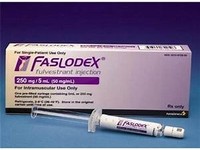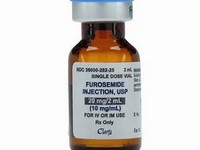Clozapine

Clozapine
CLINICAL USE
Atypical antipsychotic:Schizophrenia Psychosis in Parkinson’s diseaseDOSE IN NORMAL RENAL FUNCTION
Schizophrenia: 200–450 mg daily in divided doses, maximum 900 mg dailyPsychosis in Parkinson’s disease: 25– 37.5 mg daily at night, maximum 100 mg daily in 1–2 divided dosesPHARMACOKINETICS
DOSE IN RENAL IMPAIRMENT
GFR (mL/MIN)
DOSE IN PATIENTS UNDERGOING RENAL REPLACEMENT THERAPIES
IMPORTANT DRUG INTERACTIONS
Potentially hazardous interactions with other drugsAnaesthetics: enhanced hypotensive effect Analgesics: avoid concomitant use with azapropazone; increased risk of convulsions with tramadol; enhanced hypotensive and sedative effects with opioidsAnti-arrhythmics: increased risk of ventricular arrhythmias with anti-arrhythmics that prolong the QT interval; increased risk of arrhythmias with flecainideAntibacterials: concentration possibly increased by erythromycin (possible increased risk of convulsions); concentration increased by ciprofloxacin; concentration possibly reduced by rifampicin; avoid concomitant use with chloramphenicol and sulphonamides (increased risk of agranulocytosis)Antidepressants: concentration possibly increased by citalopram, fluoxetine, fluvoxamine, paroxetine, sertraline and venlafaxine (increased risk of toxicity); possibly increased CNS effects of MAOIs; possibly increased antimuscarinic effects with tricyclics; increased plasma level of tricyclicsAnti-epileptics: antagonises anticonvulsant effect; metabolism accelerated by carbamazepine and phenytoin; avoid concomitant use with drugs known to cause agranulocytosisAntimalarials: avoid concomitant use with artemether/lumefantrineAntipsychotics: avoid concomitant use with depot formulations (cannot be withdrawn quickly if neutropenia occurs)Antivirals: concentration possibly increased by amprenavir; concentration increased by ritonavir – avoid concomitant useAnxiolytics and hypnotics: increased sedative effectsCytotoxics: increased risk of agranulocytosis – avoid concomitant useLithium: increased risk of extrapyramidal side effects and possibly neurotoxicityPenicillamine: increased risk of agranulocytosis –avoid concomitant useSibutramine: increased risk of CNS toxicity – avoid concomitant use Ulcer-healing drugs: effects possibly enhanced by cimetidine; concentration possibly reduced by omeprazole.ADMINISTRATION
Reconstition
–Route
OralRate of Administration
–Comments
–OTHER INFORMATION
Patient must be registered with appropriate company monitoring schemeAssociated with myocarditis (increased risk in the first 2 months) and cardiomyopathyPotentially fatal agranulocytosis and neutropenia have been reported. WCC has to be monitored at least weekly for the first 18 weeks then 2 weekly for weeks 18–52 and then at least 4 weeklyIncreased risk of side effects especially seizures in doses above 450 mg dailyRarely interstitial nephritis has been reported with clozapineDose in severe renal impairment taken from personal experience.
See how to identify renal failure stages according to GFR calculation
See how to diagnose irreversible renal disease
Home








